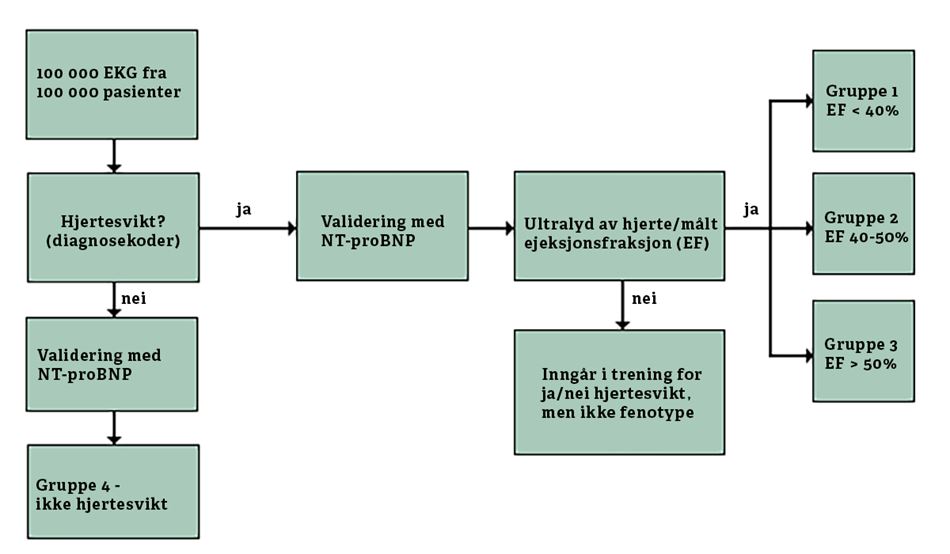About the EKG AI project
Akershus University Hospital (Ahus) is a local and regional hospital, with 12,000 employees. Ahus is responsible for a population of approx. 594,000 in the Follo, Romerike and Kongsvinger region, as well as the northernmost districts in Oslo. Ahus is Norway’s largest emergency hospital, with patient services covering somatics, mental health care and addiction treatment.
Ahus has developed a decision-support tool based on artificial intelligence, EKG AI, which can predict heart failure in patients. The decision-support tool has been developed by linking EKG data to specific diagnoses, so-called supervised learning.
Supervised learning
Supervised learning means categorised data is used. The supervision is the labelling that accompanies the data.
(From Artificial Intelligence and privacy, Norwegian Data Protection Authority, 2017, p. 7)
After training, testing and validation, this process produces an algorithm capable of predicting the probability of heart failure. No similar tools have previously been implemented in clinical activity. With Ahus’s large patient base, the project is in a good position to develop a tool with high level of accuracy, that can also be implemented in other hospital trusts in Norway.
With EKG AI, Ahus seeks to:
- Increase efficiency in diagnosing and treating heart failure.
- Improve the diagnostic process for heart failure and enable heart failure to be determined sooner.
- Reduce the time patients have to stay in hospital, treatment times and mortality rates.
- Commercialise the algorithm in the wider health sector.
Data sources and dataflow
The decision-support tool is being developed on a Google Cloud platform with the autoML tool Vertex AI.
The system was fed approx. 100,000 EKG scans from patients who have been admitted to Ahus in recent years. There are three different phenotypes of heart failure, each requiring different approaches to treatment. The EKG scans are grouped accordingly:
- Group 1: heart failure with reduced ejection fraction
- Group 2: heart failure with mid-range ejection fraction
- Group 3: heart failure with preserved ejection fraction
- Group 4: no heart failure
The grouping is based on diagnostic codes, NT-proBNP blood tests and ultrasound images of ejection fraction (EF). See figure .

The data is taken from two different sources: The EKG archive ComPACS (EKG readings and ejection fraction (EF) and the patient file system DIPS (diagnostic codes and NT-proBNP blood tests). After being categorised into four groups, all EKG readings are pseudonymised, before they are transferred to the Google Cloud platform for training, testing and validation with Vertex AI.
Pseudonymisation
De-identifying personal data so that they cannot be linked to a specific person without the use of additional information (such as a key), which is stored separately under adequate protection. Pseudonymised personal data is not anonymous.